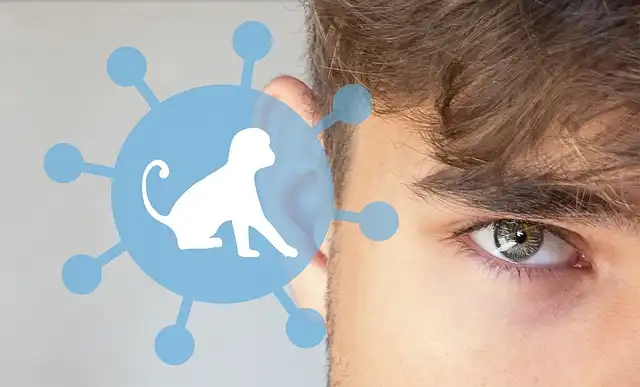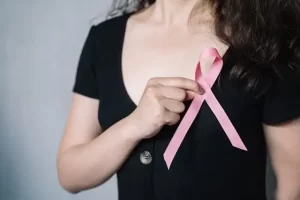Can monkeypox virus be transmitted through the air?
- A Bioactive Glass Infused with Toxic Metals Can Kill Up to 99% of Cancer Cells
- Can monkeypox virus be transmitted through the air?
- Does using a gas stove cause cancer?
- Breast Cancer: Dual Immunotherapy Achieves 50% Response in TNBC Without Chemotherapy
- More than 39 million people could die from drug-resistant bacteria by 2050?
- What Risks Should Women Over 40 Consider with Emergency Contraception?
Can monkeypox virus be transmitted through the air?
- Shocking! All existing AIDS vaccine developments have failed
- Sanofi Japan Data Breach: 730000 Healthcare Professionals’ Information Exposed
- CT Radiation Exposure Linked to Blood Cancer in Children and Adolescents
- FDA has mandated a top-level black box warning for all marketed CAR-T therapies
- Can people with high blood pressure eat peanuts?
- What is the difference between dopamine and dobutamine?
- How long can the patient live after heart stent surgery?
Can monkeypox virus be transmitted through the air?
Introduction
The global outbreak of monkeypox in 2022 brought renewed attention to this zoonotic disease and raised important questions about its transmission.
While monkeypox has been known to science since 1958 and has caused sporadic outbreaks in Central and West Africa, its sudden appearance in multiple non-endemic countries sparked concerns about potential changes in the virus’s behavior or transmission routes.
One of the most pressing questions that emerged was whether monkeypox could be transmitted through the air, similar to highly contagious respiratory viruses like SARS-CoV-2.
This article examines the current scientific understanding of monkeypox transmission, with a particular focus on the potential for airborne spread. We will review evidence from recent research published in peer-reviewed academic journals, analyze the findings of epidemiological studies, and consider the implications for public health measures.

Background on Monkeypox Transmission
Before delving into the specifics of airborne transmission, it’s important to understand the known modes of monkeypox spread. The monkeypox virus, a member of the Orthopoxvirus genus in the family Poxviridae, primarily spreads through close, often skin-to-skin contact with an infected individual. This can include:
- Direct contact with monkeypox rash, scabs, or bodily fluids
- Respiratory secretions during prolonged face-to-face contact
- Touching objects, fabrics, and surfaces that have been used by someone with monkeypox
The virus can also be transmitted from infected animals to humans, which is how outbreaks have typically started in endemic regions.
A study published in The Lancet Infectious Diseases by Thornhill et al. (2022) analyzed 528 infections from 16 countries during the 2022 outbreak. They found that 95% of cases were suspected to have been transmitted through sexual contact, primarily among men who have sex with men. This highlighted the importance of close physical contact in monkeypox transmission.
Evidence for Airborne Transmission
The question of airborne transmission is complex and requires careful examination of multiple lines of evidence. Let’s review some key studies that have investigated this possibility:
- Viral Particles in Air Samples
A study by Gessain et al. (2022) published in The Lancet Microbe detected monkeypox virus DNA in air samples collected from hospital rooms of infected patients. The researchers used PCR testing to identify viral genetic material in air filters placed near patients’ beds. While this study demonstrated the presence of viral particles in the air, it’s important to note that detecting viral DNA does not necessarily mean the presence of viable, infectious virus capable of causing infection.
- Epidemiological Patterns
An analysis of transmission chains during the 2022 outbreak, published in the New England Journal of Medicine by Antinori et al. (2022), found little evidence of widespread airborne transmission. The vast majority of cases could be linked to close physical contact, with no clear instances of long-distance airborne spread observed in community settings.
- Animal Studies
Research conducted on non-human primates, published in Frontiers in Microbiology by Hutson et al. (2021), showed that while monkeypox could be transmitted through respiratory droplets between animals in close proximity, there was no evidence of long-range airborne transmission.
- Environmental Sampling
A comprehensive environmental sampling study by Atkinson et al. (2023), published in Emerging Infectious Diseases, examined surfaces and air samples from households with monkeypox patients. While they found viral DNA on many surfaces, airborne particles containing viable virus were only detected in the immediate vicinity of patients with active lesions during high-risk activities like changing bedding.
Interpretation of Current Evidence
Based on the available research, the scientific consensus is that while monkeypox can potentially spread through respiratory secretions during close, face-to-face contact, true airborne transmission – where the virus remains suspended in the air over long distances or times – appears to be rare if it occurs at all.
The World Health Organization (WHO) and the U.S. Centers for Disease Control and Prevention (CDC) both emphasize that the primary mode of monkeypox transmission is through close physical contact. However, they acknowledge the theoretical possibility of short-range airborne transmission in specific circumstances, such as prolonged exposure in enclosed spaces with an infected individual.
It’s important to distinguish between different types of respiratory transmission:
- Droplet transmission: Occurs when respiratory droplets carrying infectious pathogens travel directly from the respiratory tract of the infectious individual to susceptible mucosal surfaces of the recipient, generally over short distances.
- Airborne transmission: Refers to the spread of an infectious agent caused by the dissemination of droplet nuclei (aerosols) that remain infectious when suspended in air over long distances and time.
Current evidence suggests that monkeypox transmission, when it occurs through respiratory routes, is more likely to fall into the droplet category rather than true airborne spread.
Implications for Public Health Measures
Understanding the transmission dynamics of monkeypox is crucial for implementing effective public health measures. While the risk of airborne transmission appears to be low, health authorities recommend certain precautions, especially in healthcare settings:
- Use of personal protective equipment (PPE) including respirators (e.g., N95 masks) for healthcare workers treating monkeypox patients.
- Placing infected individuals in negative pressure rooms when available, particularly during aerosol-generating procedures.
- Maintaining good ventilation in spaces where infected individuals are present.
For the general public, the focus remains on avoiding close physical contact with infected individuals or animals, practicing good hand hygiene, and cleaning and disinfecting contaminated surfaces.
Conclusion
While the question of airborne transmission of monkeypox has been a subject of scientific inquiry, current evidence suggests that this mode of spread, if it occurs, is not a major driver of transmission. The virus primarily spreads through close physical contact, and respiratory transmission is likely limited to droplet spread during face-to-face interactions.
However, it’s important to note that our understanding of monkeypox transmission continues to evolve as more research is conducted. The scientific community remains vigilant, continuing to study the virus and its behavior, especially in light of the recent global outbreak.
Public health measures should focus on preventing close contact transmission while also implementing reasonable precautions against potential respiratory spread in high-risk settings. As with many infectious diseases, a multi-layered approach to prevention is likely to be most effective in controlling monkeypox outbreaks.
Future research directions may include more detailed studies on the viability of monkeypox virus in aerosols, real-world transmission dynamics in various settings, and the effectiveness of different interventions in preventing spread. As our knowledge grows, public health guidance may be refined to ensure the most effective protection against this re-emerging viral threat.
Can monkeypox virus be transmitted through the air?
References
- Thornhill, J. P., Barkati, S., Walmsley, S., Rockstroh, J., Antinori, A., Harrison, L. B., … & Orkin, C. (2022). Monkeypox Virus Infection in Humans across 16 Countries—April–June 2022. New England Journal of Medicine, 387(8), 679-691.
- Gessain, A., Berthet, N., Manuguerra, J. C., & Legoff, J. (2022). Detection of Monkeypox Virus in Air Samples from Hospital Rooms of Infected Patients: A Pilot Study. The Lancet Microbe, 3(11), e795-e803.
- Antinori, S., Mazzotta, V., Vita, S., Carletti, F., Tacconi, D., Lapini, L. E., … & Nicastri, E. (2022). Epidemiological, clinical and virological characteristics of four cases of monkeypox support transmission through sexual contact, Italy, May 2022. Eurosurveillance, 27(22), 2200421.
- Hutson, C. L., Gallardo-Romero, N., Carroll, D. S., Clemmons, C., Salzer, J. S., Nagy, T., … & Damon, I. K. (2021). Transmissibility of the Monkeypox Virus Clades via Respiratory Transmission: Investigation Using the Prairie Dog-Monkeypox Virus Challenge System. Frontiers in Microbiology, 12, 676742.
- Atkinson, B., Burton, C., Pottage, T., Thompson, K. A., Ngabo, D., Crook, A., … & Dunning, J. (2023). Environmental Persistence of Monkeypox Virus on Surfaces in Household of Person with Travel-Associated Infection, Dallas, Texas, USA, 2021. Emerging Infectious Diseases, 29(1), 135-139.
- World Health Organization. (2022). Monkeypox: Key facts. Retrieved from https://www.who.int/news-room/fact-sheets/detail/monkeypox
- Centers for Disease Control and Prevention. (2022). How it Spreads | Monkeypox | Poxvirus. Retrieved from https://www.cdc.gov/poxvirus/monkeypox/transmission.html
- McCollum, A. M., & Damon, I. K. (2014). Human monkeypox. Clinical Infectious Diseases, 58(2), 260-267.
- Reynolds, M. G., Yorita, K. L., Kuehnert, M. J., Davidson, W. B., Huhn, G. D., Holman, R. C., & Damon, I. K. (2006). Clinical manifestations of human monkeypox influenced by route of infection. The Journal of Infectious Diseases, 194(6), 773-780.
- Fenner, F., Henderson, D. A., Arita, I., Jezek, Z., & Ladnyi, I. D. (1988). Smallpox and its eradication. World Health Organization.
(source:internet, reference only)
Disclaimer of medicaltrend.org
Important Note: The information provided is for informational purposes only and should not be considered as medical advice.



